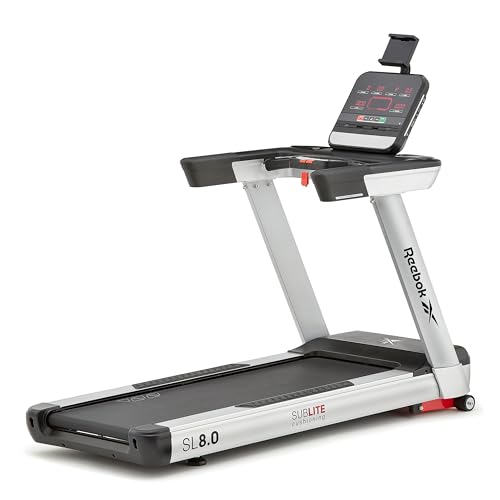5 Non Powered Treadmill Leçons From The Professionals

The Rise of Non-Powered Treadmills: A Deep Dive into Their Benefits and Features
In a world significantly concentrated on health, wellness, and fitness, the options for workout equipment seem endless. Among Manual Walking Machine , non-powered treadmills are gaining substantial traction. These makers, which do not count on electrical power to operate, provide an unique blend of advantages and benefits that cater to a diverse audience. This blog post explores the functions, benefits, and considerations associated with non-powered treadmills, while likewise answering common questions surrounding them.
What is a Non-Powered Treadmill?
A non-powered treadmill, frequently referred to as a manual treadmill, is a kind of treadmill that is run by the user's motion rather than an electric motor. Users power the belt forward by walking or running, making it a versatile option for cardio workouts. Non-powered treadmills are typically seen in home gyms, physical fitness studios, and rehabilitation centers due to their simpleness and effectiveness.
Contrast: Non-Powered vs. Powered Treadmills
To comprehend the growing popularity of non-powered treadmills, it's important to compare them versus their powered equivalents. The table listed below highlights some key differences:
| Feature | Non-Powered Treadmill | Powered Treadmill |
|---|---|---|
| Power Source | Manual (user-driven) | Electric (motor-driven) |
| Cost | Generally more inexpensive | Typically more pricey |
| Upkeep | Low maintenance needs | Higher upkeep requirements |
| Area Requirements | Typically less bulky | Can be large and heavy |
| Incline Adjustment | Manual changes | Automatic settings readily available |
| Exercise Intensity | Variable; depends on user effort | Constant; speeds set by the user |
| Threat of Injury | Lower, promotes natural movement | Higher, due to speed settings |
Training Benefits of Non-Powered Treadmills
- Engagement of Core Muscles: Non-powered treadmills demand a greater level of balance and core engagement. Users should stabilize themselves, which in turn integrates core strength into the workout.
- Natural Running Mechanics: As users propel the tread, they simulate natural running or walking strategies, minimizing the risks of injury associated with fast-paced powered treadmills.
- Customizable Speed and Intensity: Because the treadmill counts on user effort, individuals can select their workout speed, making it ideal for both novices and advanced professional athletes.
- Increased Caloric Burn: Research shows that users may burn more calories on a non-powered treadmill compared to a powered one at similar strengths. The factor? Manual treadmills can press the body to work harder and to keep a greater level of strength throughout the exercise.
- Toughness: Non-powered treadmills are usually more rugged and constructed to last, with fewer electronic elements that might fail over time.
Considerations for Choosing a Non-Powered Treadmill
Before purchasing, potential buyers should consider the following functions:
| Feature | Considerations |
|---|---|
| Weight Limit | Guarantee it suits your body type and requires |
| Belt Size | A broader belt can provide more comfort, especially for running |
| Incline Settings | Try to find alternatives to change incline for varying exercise strength |
| Frame Construction | Go with long lasting products that can endure extensive use |
| Portability | Consider models that are simple to move or save out of the method |
Regularly Asked Questions (FAQ)
1. Are non-powered treadmills suitable for everybody?Yes, these treadmills are normally appropriate for users of all fitness levels. Nevertheless, individuals with specific health concerns should seek advice from a physician before beginning any brand-new exercise program.
2. How much do non-powered treadmills cost?Rates can vary commonly, typically varying from ₤ 200 to upwards of ₤ 2,000 based on quality and features. Manual alternatives tend to be more cost effective than powered versions.
3. How do I keep a non-powered treadmill?Upkeep tends to be minimal; simply guarantee that the belt is tidy and look for wear and tear occasionally. It's also important to keep moving parts lubed for smooth operation.
4. Can I run or stroll on a non-powered treadmill?Yes, non-powered treadmills are created for both walking and running. Users can change their workout strength based on speed and stride.
5. Do I need to adjust the incline manually?Yes, many non-powered treadmills need manual modifications for incline modifications, enabling users to differ their exercises as preferred.
The non-powered treadmill stands as a practical and effective workout service, best for those wanting to enhance their exercise routine without the complexities of powered machines. By supplying a strenuous workout that engages the core and works the body holistically, these treadmills are designed to produce a reliable cardio experience that caters to all physical fitness levels. Their cost, sturdiness, and total effectiveness for calorie burning contribute to their increase in appeal.
Whether you are a seasoned professional athlete trying to find a tougher workout or a novice taking those initial steps toward fitness, non-powered treadmills use an inviting option to the traditional electric treadmill. With the included benefit of lower maintenance and cost, they should have factor to consider on your physical fitness journey.

